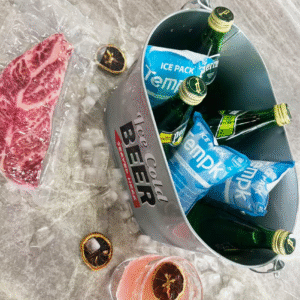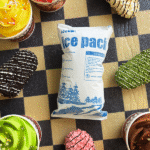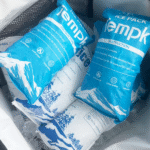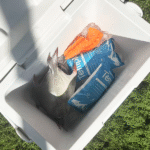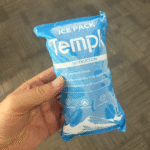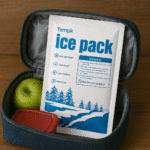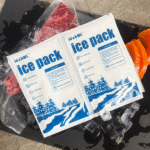Pacotes de gelo seco para transporte de frutos do mar: Melhores práticas para 2025
O envio de frutos do mar exige precisão, especialmente quando se trata de controle de temperatura. Manter a temperatura correta durante o transporte é vital para garantir que os frutos do mar cheguem frescos, seguro, e livre de deterioração. Pacotes de gelo seco, com sua capacidade de manter temperaturas extremamente baixas sem deixar umidade para trás, são essenciais para manter frutos do mar congelados durante o transporte. Neste guia, exploraremos a eficácia do gelo seco para o transporte de frutos do mar, delinear as melhores práticas para usá-lo, e discutir as principais considerações para uma remessa bem-sucedida em 2025.
-
Como as bolsas de gelo seco preservam frutos do mar durante o transporte?
-
Quais são as melhores práticas para enviando frutos do mar com bolsas de gelo seco?
-
Quanto gelo seco é necessário para remessas de frutos do mar?
-
Quais são as principais considerações para escolher bolsas de gelo seco para frutos do mar?
Como as bolsas de gelo seco preservam frutos do mar durante o transporte?
Gelo seco, ou dióxido de carbono sólido, sublima diretamente de um sólido para um gás a -78,5°C (-109.3°F), o que ajuda a manter a temperatura de congelamento necessária para frutos do mar durante o trânsito. Ao contrário dos pacotes de gel ou gelo úmido, o gelo seco não deixa nenhum resíduo líquido, que podem prejudicar os produtos do mar, afectando a sua textura ou introduzindo contaminantes. O gelo seco mantém os frutos do mar congelados sem o risco de deterioração causada pelo descongelamento ou crescimento de bactérias.
Principal benefício:
O gelo seco é incrivelmente eficaz na manutenção de baixas temperaturas sem introduzir umidade, garantindo que os frutos do mar permaneçam congelados e frescos por longos períodos.
Para a ponta:
Uma bolsa de gelo seco de 10 libras pode manter uma temperatura de -78,5°C por cerca de 24 horas, ideal para remessas mais curtas de frutos do mar. Para tempos de envio estendidos, gelo seco adicional pode ser necessário.
Como as bolsas de gelo seco mantêm a temperatura
O processo de sublimação do gelo seco ajuda os frutos do mar a permanecerem congelados, mesmo em transporte não refrigerado. Quando usado com recipientes isolados, o gelo seco prolonga o frescor dos frutos do mar, criando um ambiente frio e evitando o crescimento bacteriano. O isolamento ajuda a reter o ar frio e retarda o processo de sublimação do gelo seco, garantindo que seus frutos do mar permaneçam na temperatura desejada pelo maior tempo possível.
| Tipo de item | Uso de gelo seco | Benefícios |
|---|---|---|
| Frutos do mar | 5-10 libras por 24 horas | Evita o descongelamento, preserva o frescor |
| Carne | 5-10 libras por 24-48 horas | Previne a deterioração e o crescimento bacteriano |
| Itens Congelados | 4-6 libras por 24 horas | Mantém o estado congelado, evita o descongelamento |
Melhores práticas para envio de frutos do mar com bolsas de gelo seco
Para garantir o uso mais eficaz de gelo seco no transporte de frutos do mar, Siga estas melhores práticas:
-
Use a quantidade correta de gelo seco: Para uma remessa de 24 horas, usar 5-10 libras de gelo seco. Para remessas com duração de até 48 horas, considere usar 10-15 libras, dependendo do isolamento e das condições de envio.
-
Isole o contêiner de transporte: Certifique-se de que o contêiner de transporte esteja isolado adequadamente para manter a temperatura fria pelo maior tempo possível. Um bom isolamento retarda a sublimação e preserva a qualidade dos frutos do mar.
-
Deixe espaço para ventilação: Gelo seco sublima -se em gás, e o gás precisa escapar do recipiente para evitar o aumento de pressão. Deixe sempre espaço para ventilação.
-
Embale os frutos do mar corretamente: Coloque o gelo seco no fundo do recipiente, garantindo que os frutos do mar permaneçam acima do gelo. Este posicionamento garante que os frutos do mar permaneçam frios sem contato direto com gelo seco.
Nota importante: Sempre verifique os regulamentos que regem o transporte de gelo seco em sua área, já que certas jurisdições exigem rotulagem e documentação específicas.
Quanto gelo seco é necessário para remessas de frutos do mar?
A quantidade de gelo seco necessária depende de vários fatores, incluindo o tamanho da remessa, duração do trânsito, e isolamento usado. Uma orientação geral é usar 5-10 libras de gelo seco por 24-48 horas de trânsito. No entanto, é sempre bom ajustar com base nas condições ambientais e na duração do envio.
Exemplo de cálculo
Para uma remessa com duração 36 horas, você precisará de aproximadamente 10-15 libras de gelo seco, dependendo da embalagem e das condições ambientais.
| Duração da remessa | Gelo seco necessário | Recomendação de embalagem |
|---|---|---|
| Até 24 horas | 5-10 libras | Recipiente isolado padrão |
| Até 48 horas | 10-15 libras | Isolamento avançado ou múltiplas camadas de gelo seco |
Principais considerações ao escolher bolsas de gelo seco para remessas de frutos do mar
Ao selecionar gelo seco para remessas de frutos do mar, há vários fatores importantes a serem considerados:
-
Requisitos de temperatura: Certifique-se de que o gelo seco mantenha uma temperatura que mantenha os frutos do mar congelados. A temperatura deve permanecer abaixo de -18°C (0°F) para evitar o descongelamento.
-
Qualidade de isolamento: Quanto melhor for o isolamento do seu contêiner de transporte, Quanto mais o gelo seco durará, reduzindo a frequência de reposição necessária.
-
Tamanho e ajuste: O kit de envio deve ser dimensionado adequadamente para acomodar tanto os frutos do mar quanto o gelo seco. Um contêiner muito pequeno será ineficiente, enquanto um recipiente muito grande pode causar sublimação desnecessária.
-
Conformidade com os regulamentos: Certifique-se de que sua remessa esteja em conformidade com os regulamentos locais e internacionais relativos ao gelo seco. Rotulagem e documentação adequadas são necessárias para garantir o transporte seguro de gelo seco.
Dica para remessas internacionais: Sempre verifique as diretrizes do país de destino quanto aos regulamentos de gelo seco, pois as regras podem variar significativamente.
2025 Tendências no transporte de gelo seco para frutos do mar
À medida que a indústria de logística da cadeia fria evolui, diversas inovações e tendências estão moldando o futuro do transporte marítimo de frutos do mar:
Contêineres inteligentes
A integração da tecnologia no transporte marítimo de gelo seco resultou no desenvolvimento de contêineres inteligentes com sensores de temperatura integrados. Esses sensores podem fornecer alertas em tempo real se a temperatura cair fora da faixa aceitável, garantindo que os frutos do mar permaneçam na temperatura ideal durante o trânsito.
Materiais ecológicos
As preocupações ambientais estão empurrando a indústria para práticas mais sustentáveis. Muitas empresas estão adotando materiais ecológicos, como isolamento biodegradável e embalagens recicláveis, para reduzir o impacto ambiental do transporte marítimo de gelo seco.
Melhor produção de gelo seco
Os avanços na produção de gelo seco tornaram-na mais eficiente e econômica, permitindo que as empresas reduzam seus custos operacionais e forneçam soluções de remessa mais acessíveis para produtos perecíveis.
Perguntas frequentes
Pergunta 1: Quanto gelo seco é necessário para transportar frutos do mar 24 horas?
Tipicamente, 5-10 quilos de gelo seco são suficientes para uma remessa de frutos do mar 24 horas por dia. Ajuste sempre o valor dependendo das condições específicas do envio.
Pergunta 2: O gelo seco pode ser usado para transportar frutos do mar vivos?
Embora o gelo seco seja eficaz para o transporte de frutos do mar congelados, não é adequado para frutos do mar vivos. Mariscos vivos requerem temperaturas acima de zero e precisam de ventilação adequada para evitar asfixia. Para frutos do mar vivos, pacotes de gel ou gelo úmido são uma opção melhor.
Conclusão e sugestões
Usar gelo seco para enviar frutos do mar garante que seus produtos permaneçam congelados durante o transporte, preservando seu frescor e evitando a deterioração. Seguindo as melhores práticas para embalagem, escolhendo a quantidade correta de gelo seco, e garantindo a conformidade com os regulamentos de transporte, você pode transportar frutos do mar com sucesso, mantendo a qualidade do produto.
Sugestão de ação: Se você está planejando enviar frutos do mar, consulte um fornecedor de logística para determinar os melhores requisitos de gelo seco e métodos de envio adaptados às suas necessidades.
Sobre Tempk
E tempk, somos especializados em fornecer soluções avançadas de logística de cadeia de frio para produtos perecíveis, incluindo frutos do mar. Nossos kits de transporte de gelo seco e contêineres isolados garantem que seus produtos permaneçam frescos e seguros durante o transporte.
Chamado à ação: Entre em contato com a Tempk hoje mesmo para obter aconselhamento especializado sobre kits de transporte de gelo seco e outras soluções de cadeia de frio adaptadas às suas necessidades de transporte de frutos do mar.






